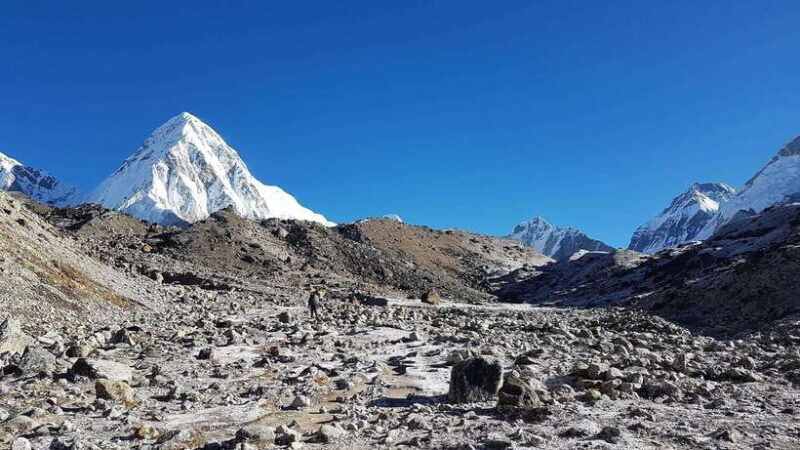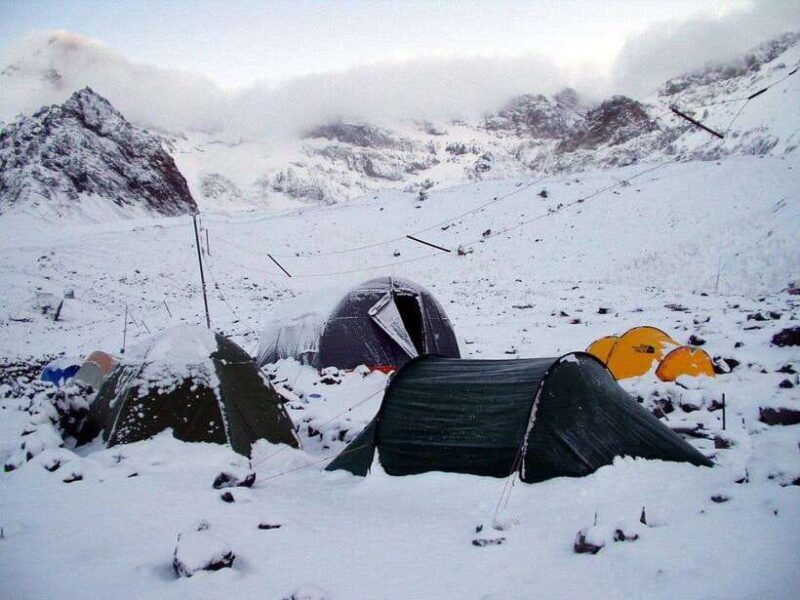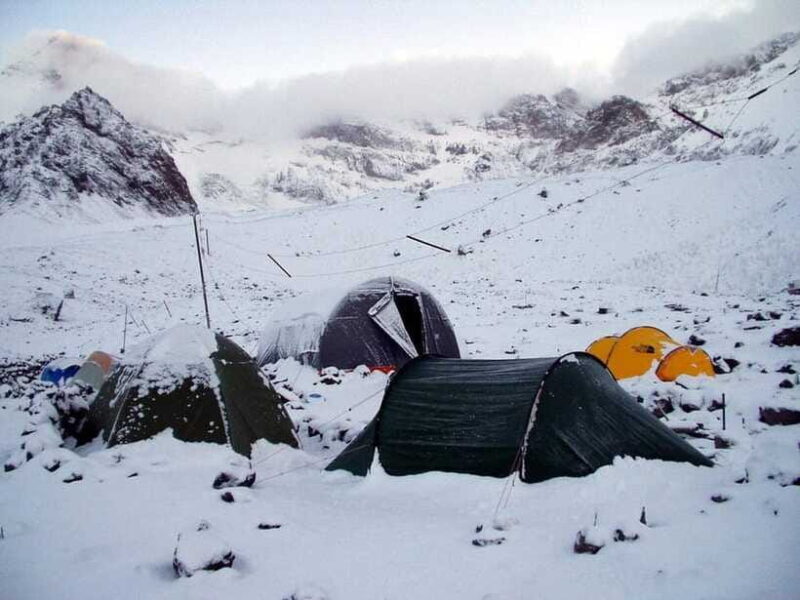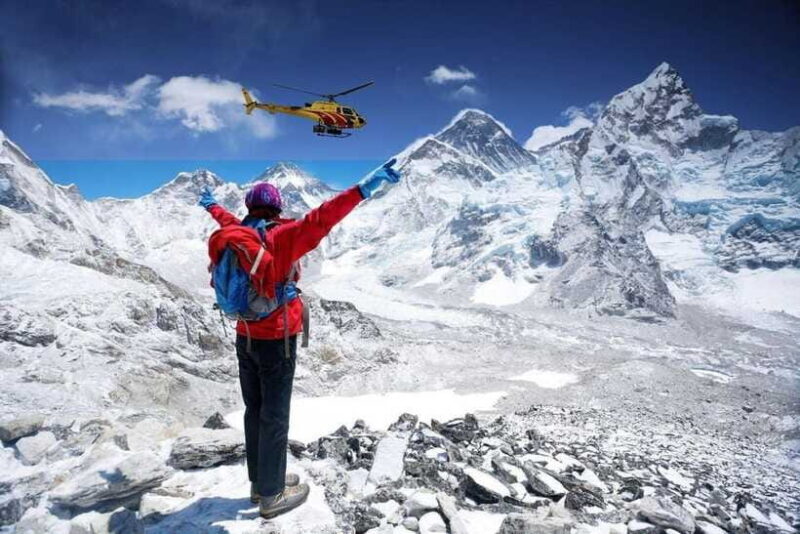Imagine flying into the tiny mountain airstrip of Lukla, surrounded by rugged peaks, then trekking for 16 days through lush forests, traditional Sherpa villages, and finally standing at the foot of Everest itself. That’s precisely what this Everest Base Camp Trek offers. Priced at $1,447 per person, this guided adventure is designed for those who want more than just photos — it’s about experiencing the mountain culture, the challenge, and the incredible scenery firsthand.
What we love about this trek? First, the trans-Himalayan flight into Lukla is a highlight — it’s a small-plane thrill that sets the tone for the journey. Second, the chance to walk through famous Sherpa villages like Namche Bazaar and Dingboche offers authentic insight into local life. On the flip side, one thing to consider is the physical challenge — this trek demands good fitness and acclimatization days to prevent altitude sickness. It’s best suited for adventurous travelers prepared for some demanding days but eager to reach the “roof of the world.”
If you’re someone who dreams of standing at Everest’s base and soaking in the spectacular Himalayan vistas, this trek is a perfect fit. It’s ideal for those with a moderate level of fitness, a love for cultural encounters, and a desire to see the mountains up close without the hassle of independent planning.
Key Points

- Stunning Trans-Himalayan flight into Lukla starts the adventure with a bang.
- Authentic Sherpa villages like Namche Bazaar and Dingboche provide a glimpse into mountain life.
- Altitude acclimatization days help prevent sickness, making the trek safer and more enjoyable.
- All-inclusive pricing covers permits, flights, accommodations, and meals, offering great value.
- Guided experience with professional guides, porters, and a medical kit ensures support throughout.
- Cultural and scenic highlights make this trek both a physical challenge and a visual feast.
A Detailed Look at the Everest Base Camp Trek

Love the outdoors? Here are other hiking experiences we've covered in Pheriche
Starting Point: Kathmandu and the Flight into Lukla
Your adventure kicks off in Kathmandu, where you’ll meet your guide and get a brief briefing. We appreciate that the package includes deluxe twin-share accommodation in Kathmandu, offering a comfortable start before heading into the mountains. The next morning, you’ll take a trans-Himalayan flight to Lukla, a small, rugged airstrip perched near towering peaks. This flight is often described as “thrilling,” with views of snow-capped mountains and the valley below.
Traveling by plane here isn’t just a practical necessity — it’s part of the experience. You’ll get a taste of Himalayan aviation, which is as much about skill as it is about adventure. Some travelers mention feeling a slight nervousness, but most are thrilled once they land safely, greeted by the friendly Sherpa guides and porters.
The Trek Begins: Into the Hills and Forests
After a hearty breakfast, the trekking begins. The route takes you through pine and rhododendron forests, with occasional sightings of local wildlife and mountain streams. The first few days are gentle but gradually gain altitude, allowing your body to adapt.
One of the things we love is the pace set by the guides — they help you find a rhythm that’s challenging yet manageable. Along the way, you’ll stop in Sherpa villages, where the architecture, prayer flags, and bustling markets give insight into mountain life. These stops are also great for photography and interacting with locals, who are often eager to share stories.
Day-by-Day Highlights
Namche Bazaar is often called the “gateway to Everest” and is a lively hub filled with shops, cafes, and bakeries. We liked that the itinerary includes a rest day here — an important chance to acclimatize and enjoy the panoramic views of Everest, Lhotse, and Ama Dablam. Many travelers quote the breathtaking mountain views from Namche as a highlight.
Moving higher, you’ll visit Dingboche, a charming village at the edge of the alpine zone. Here, the air thins and the landscape turns stark but stunning. The acclimatization days built into the schedule are crucial; they help prevent altitude sickness and allow your body to adjust gradually.
Midway through, you’ll stop at Tengboche Monastery, a spiritual site with a stunning backdrop of Everest and Nuptse. The monks’ chants and the view make it a memorable moment.
More Great Tours NearbyReaching Everest Base Camp
After days of trekking through rocky trails, suspension bridges, and high-altitude villages, you’ll finally arrive at the Everest Base Camp. It’s a place filled with a mix of awe and nostalgia, knowing Sir Edmund Hillary and Tenzing Norgay once set foot here. The camp is scattered with colorful tents and flags, and from here, you get close-up views of the Khumbu Icefall and the South Col.
Many travelers say visiting EBC is humbling and exhilarating — you’re standing in the shadow of the highest mountain on Earth, feeling both small and awestruck. It’s common to spend some time soaking in the views, taking photos, or just sitting quietly with a sense of accomplishment.
- Everest Base Camp Trek 12 Days
- Everest Base Camp Trek: A short EBC Trek to Iconic Himalaya
- Budget : 12 Days Everest Base Camp Trek from Kathmandu
- Mount Everest Helicopter Tour: EBC & Kala Patthar View
- From Lukla: 9 Day Everest Base Camp with Kala Patthar Trek
- From Pokhara: 11-Day Budget Everest Base Camp Trek
Returning and Celebrating
The trek back follows the same route, with opportunities to revisit favorite spots or capture last-minute photos. Most groups celebrate with a farewell dinner in Kathmandu, often including a local cultural show, which adds a festive end to your journey.
What’s Included and What’s Not?

The tour’s all-inclusive price of $1,447 covers many essentials: airport pickups and drop-offs, deluxe accommodations in Kathmandu, local sightseeing, full-board meals during the trek, Lukla flights, permits, and experienced guides with porters. We find this package offers solid value, especially considering the support and logistics arranged by the operator.
However, some costs are not included, such as lunch and dinner in Kathmandu, beverages, entrance fees during sightseeing, and personal expenses. Travelers should also plan their own international flights and travel insurance.
The Support System
You’ll travel with professional guides, porters (one for every two trekkers), and assistant guides if needed. The guides are seasoned and knowledgeable, and the porters are well-equipped with trekking gear, including boots and jackets, which adds to the professionalism of the operation. The medical kit is a reassuring inclusion, especially at higher elevations.
Accommodations and Meals
During the trek, you’ll stay in teahouses and mountain lodges, which are basic but clean and cozy. Many comments highlight the warmth of the staff and the delicious meals served, including hot breakfasts, hearty lunches, and warm dinners, often with local specialties. The hot water bowls and tea/coffee are small comforts that make the high-altitude nights more bearable.
Practical Tips and Considerations

- Altitude: The included acclimatization days help but be prepared for some physical exertion and potential altitude effects. Hydration, pacing, and listening to your body are key.
- Physical Fitness: This is not a casual walk; you should have a reasonable fitness level to handle uphill climbs, long days, and variable weather.
- Weather: Mountain weather can change quickly; pack layers, rain gear, and sun protection.
- Packing: Essentials include comfortable shoes, warm clothing, a camera, water, and a daypack. The provided four-season sleeping bag and trekking gear are a bonus, but bring your personal items for comfort.
- Cultural Respect: Be mindful of local customs, especially at monasteries and villages. Respectful behavior enhances your experience and local interactions.
Who Should Consider This Trek?

This trek is best suited for travelers with moderate fitness who are prepared for altitude gains and some physical challenge. It’s ideal for those interested in mountain scenery, Sherpa culture, and the experience of walking in the shadows of Everest. It’s not suitable for children under 12, pregnant women, or those with significant health issues, especially respiratory or heart problems.
Final Thoughts
The Everest Base Camp Trek offers a compelling combination of adventure, culture, and stunning scenery. The inclusive package makes logistics easier and allows you to focus on the experience rather than the details of planning. The support from experienced guides and porters ensures safety and comfort, while the journey itself provides enough challenge to feel earned once you stand at the world’s most famous mountain.
For those dreaming of standing at the foot of Everest and soaking in Himalayan majesty, this trek provides an authentic, rewarding route. It’s perfect for curious travelers who are physically prepared and eager to embrace the magic of the Himalayas in a way that’s both adventurous and culturally enriching.
FAQs

What is included in the price?
The price covers airport pickup/drop-off, deluxe accommodations in Kathmandu, sightseeing, a round-trip flight to Lukla, permits, trek accommodations, meals, and experienced guides with porters.
Are there acclimatization days?
Yes, the itinerary includes acclimatization days, which are important to help prevent altitude sickness and make the trek safer and more enjoyable.
What should I bring?
Pack comfortable shoes, warm clothing, a camera, water, and a daypack. The trek provider supplies a four-season sleeping bag and trekking gear for porters, but personal comfort items are recommended.
Is this trek suitable for beginners?
While not for complete amateurs, it’s accessible for travelers with a reasonable level of fitness who are prepared to undertake some physically demanding days and enjoy the mountain environment.
What is the condition of the accommodations?
During the trek, accommodations are in teahouses and mountain lodges. Travelers describe them as basic but clean, with warm hospitality and hearty meals.
Are meals included during the trek?
Yes, full board meals of breakfast, lunch, and dinner are included, along with tea and coffee.
Can I do this trip if I have health issues?
People with respiratory, heart, or back problems should consult their doctor before considering this trek, as altitude and physical exertion are involved.
What happens if I cancel?
You can cancel up to 24 hours in advance for a full refund, providing some flexibility.
Are children allowed?
This trek is generally not suitable for children under 12 years due to the physical demands and altitude.
Whether you’re after a sense of achievement, stunning scenery, or a cultural connection, this Everest Base Camp Trek offers a well-rounded Himalayan adventure that leaves many travelers feeling inspired and humbled.
You can check availability for your dates here:More Hiking & Trekking Tours in Pheriche
More Tour Reviews in Pheriche
- From Lukla: 18-Day Everest Base Camp and Gokyo Lakes Trek
- Kathmandu: Everest View Trek with Villages & Monasteries
- Kathmandu: Everest Base Camp Helicopter Tour with Gokyo Lake
- From Kathmandu: 12Day Everest Base camp Trek
- Everest Base Camp off the Beaten Path with Gokyo Trek
- Everest Base Camp Trek- 12 Days
More Pheriche experiences we've covered
- From Lukla: 18-Day Everest Base Camp and Gokyo Lakes Trek
- Kathmandu: Everest View Trek with Villages & Monasteries
- Kathmandu: Everest Base Camp Helicopter Tour with Gokyo Lake
- From Kathmandu: 12Day Everest Base camp Trek
- Everest Base Camp off the Beaten Path with Gokyo Trek
- Everest Base Camp Trek- 12 Days
- Kathmandu: Everest Helicopter Tour with Syangboche Landing
- Lukla: 11-Day Everest Base Camp Trek from Lukla with Guide
- Kathmandu : Budget 15-Day Everest Base Camp Trek 2024/2025
- Kathmandu: 20-Day Everest Base Camp with Kala Patthar Trek
- Kathmandu: 20 Day Everest Base Camp Trek with Kalapatthar
- From Kathmandu: 15-Day Everest Base Camp Trek
